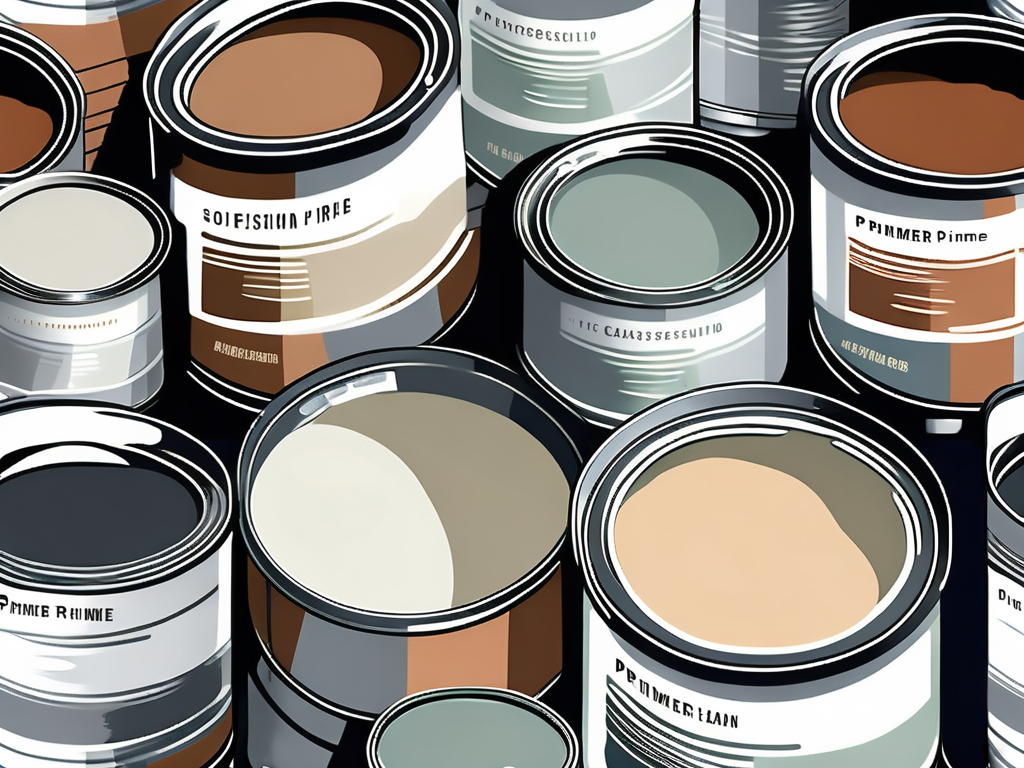Choosing the right paint for your home’s interior is a crucial aspect of interior design. With a wide variety of paints available, making an informed decision can not only enhance the aesthetic appeal of your living space but also improve its longevity. In this article, we will delve into the fundamentals of interior paints, explore the different types available, and discuss important considerations when selecting the perfect paint for your home.
The Basics of Interior Paints
Interior paints are specially formulated to withstand the unique conditions of indoor environments. They are designed for application on walls, ceilings, and other surfaces inside the home. Understanding the basic properties and purposes of interior paints can help homeowners make better decisions when selecting materials for their projects.
Defining Interior Paints
Interior paints are typically water-based or oil-based paints that are used for interior surfaces such as drywall, wood, or plaster. The formulation of these paints ensures they adhere properly while providing the desired finish. Interior paints are also less durable than exterior paints since they do not need to withstand the same environmental stressors.
Most interior paints come in a variety of finishes, including flat, eggshell, satin, semi-gloss, and glossy. Each finish has a different shine level and specific uses, making it vital to understand the characteristics of the paint before application. For example, flat finishes are excellent for hiding imperfections on walls, while semi-gloss and glossy finishes are more suitable for areas that require durability and washability, such as kitchens and bathrooms. The choice of finish can dramatically affect not only the aesthetic appeal but also the maintenance of the painted surface.
Importance of Choosing the Right Paint
The selection of the right interior paint affects not only the visual aspect of a room but also its functionality. For instance, using a muted, warm tone can create a cozy atmosphere, while bright or cooler colors can open up a space and make it feel larger. Additionally, choosing paint that suits the specific needs of each room—such as moisture-resistant paints in bathrooms—can enhance both longevity and performance. The right paint can also contribute to the overall health of your indoor environment; low-VOC (volatile organic compounds) paints are available and are better for air quality, making them a smart choice for families with young children or individuals with sensitivities.
Furthermore, high-quality paints can often withstand wear and tear better, requiring fewer touch-ups over time, thus saving you both time and money in the long run. It’s also worth noting that the application process can vary significantly between different types of paint; for instance, oil-based paints typically require solvents for cleanup, while water-based paints can be cleaned with soap and water. This can influence not only the ease of use but also the overall experience of your painting project, making it essential to consider your own comfort level and the tools you have at your disposal when making your selection.
Exploring Different Types of Interior Paints
The variety of paints available for interior use can be overwhelming. However, it’s important to break them down into specific categories based on their base components and intended use.
Oil-Based Paints
Oil-based paints have been a classic choice for many years, known for their durability and smooth finish. They are often preferred for painting woodwork, trim, and furniture due to their excellent adhesion and rich color depth.
However, they have a longer drying time and emit stronger fumes during application, which means proper ventilation is essential. Clean-up requires solvents like mineral spirits, making them less convenient compared to water-based options.
Water-Based Paints
Water-based paints, including latex paints, have gained popularity due to their ease of use and quick drying times. They offer low odor and cleanup is manageable with just soap and water. These paints are also less prone to yellowing over time, maintaining their appearance longer, which is why they are favored for most indoor applications.
The wide range of colors and finishes available in water-based paints makes them ideal for walls and ceilings in any room of the home.
Latex-Based Paints
Latex paints are a subset of water-based paints and are specifically designed for ease of application and versatility. They provide excellent coverage and adhere well to various surfaces, making them suitable for different rooms.
These paints are also mildew-resistant, which is particularly beneficial in humid areas like kitchens and bathrooms. Their ability to expand and contract with temperature changes makes them a reliable choice for interior applications.
Factors to Consider When Choosing Interior Paints
When navigating the selection of interior paints, several key factors should be kept in mind. These elements can significantly influence not just the appearance of your spaces, but also the long-term satisfaction with your choices.
Durability and Coverage
Durability is a major consideration, especially in high-traffic areas such as hallways or living rooms. Choosing a paint that has good coverage will ensure that fewer coats are needed, thereby saving time and resources. Look for paints rated for washability if you have children or pets, as these can be cleaned easily without damaging the finish.
Finish and Sheen
The finish of the paint contributes significantly to the overall feel of a room. Flat finishes are excellent for hiding imperfections on walls, while satin and semi-gloss finishes are easier to clean and great for high-use areas. Understanding how different finishes interact with light can also help in creating the desired ambiance in a space.
Color and Mood
Color psychology plays a major role in your home’s atmosphere. Warm colors, like reds and yellows, can create a sense of energy, while cooler colors, such as blues and greens, can promote calmness and relaxation. Consider the purpose of each room and select colors that contribute positively to that intended experience.
The Role of Primer in Interior Painting
Primer is often an overlooked component in the painting process but is essential to achieving a professional-looking finish. Its primary function is to create a smooth base for the topcoat, improving adhesion and ensuring that the color appears more vibrant.

Understanding Primer
Primers can come in oil-based or water-based formulations, and selecting the appropriate type is crucial based on the surface being painted. For example, using a stain-blocking primer is beneficial when dealing with water stains or previous coatings that may bleed through.
Moreover, some primers provide additional benefits, such as mildew resistance or thermal insulation, which can enhance the overall performance and longevity of the paint job.
When and Why to Use Primer
Using a primer is advisable when painting over a dark color, on raw or porous surfaces, or when transitioning between different paint types. Skipping the primer can lead to uneven colors and increased paint usage as the topcoat may not adhere properly.
Ultimately, using a quality primer sets the foundation for a successful paint job, offering better adherence, durability, and finish quality.
Safety Considerations for Using Interior Paints
While paints can transform your living space, it is critical to consider safety aspects associated with their application. Ensuring a safe environment during and after painting is paramount to protect both the inhabitants and the integrity of the home.
Ventilation and Paint Fumes
Interior paints can release volatile organic compounds (VOCs) that can pose health risks when inhaled. Adequate ventilation during the painting process—such as opening windows and using fans—can help dissipate these fumes and maintain air quality.
Additionally, opting for low-VOC or zero-VOC paints can minimize health risks and environmental impact, making your painting project safer for your family.
Safe Disposal of Leftover Paint
It’s important to dispose of leftover paint correctly to avoid harming the environment. Check with local waste management authorities for guidelines on how to dispose of paints properly, as many areas offer specialized collection programs for toxic materials.
You can also consider donating extra paints to community organizations or using them for smaller projects around the home, thereby reducing waste.
In conclusion, understanding the different types of interior paints and considering factors such as durability, finish, color, and health implications allows homeowners to make informed, effective choices. Investing time in research and preparation can result in a more satisfying and aesthetically pleasing home environment.

